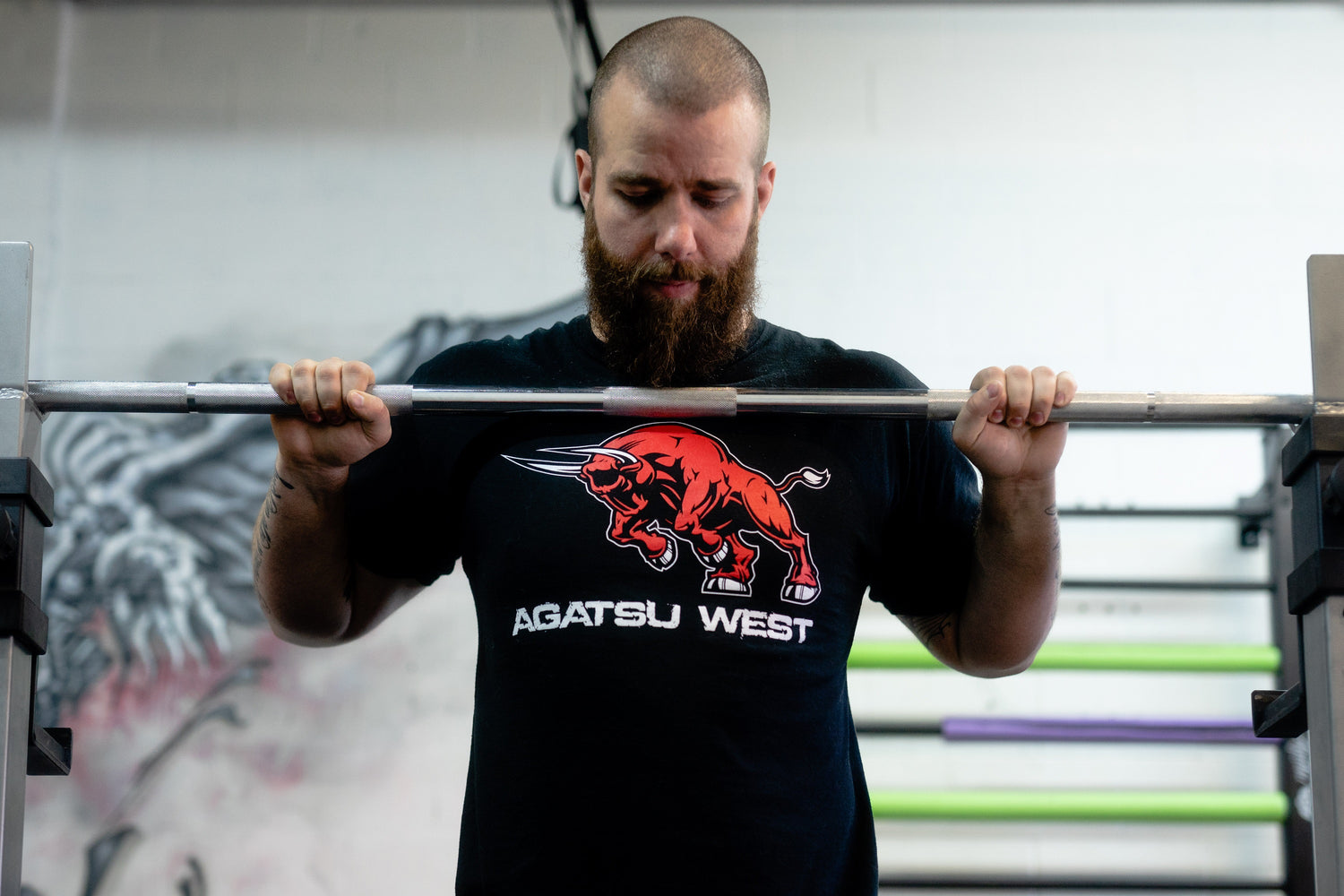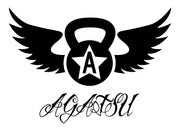Congratulations on taking the first steps towards meeting your fitness goals!
The Agatsu Foundations program was designed to help you build
strength,
endurance,
balance,
flexibility and
mobility. Each week you will receive a new program to follow that contains both a beginner and more advanced workout option to help you appropriately scale your training. Remember that the goal of these programs is to increase your overall fitness. Workouts are numbered days 1 to 5. You may follow as many or as few as you like.
Here are some training templates to help you get started:
Select 2-3 Training Days a week if you are just beginning this programming or mixing it in with other training that you do.
2 Training Days a Week: Choose 1 Strength and 1 Flexibility day, with 1-2 rest days in between.
3 Training Days a Week: On ODD weeks choose 2 Strength and 1 Flexibility day, with 1 rest day in between. On EVEN weeks choose 2 Flexibility and 1 Strength day. Make sure to alternate your Strength and Flexibility days.
4-5 Training Days a Week: Follow along with the programing as is. Make sure to schedule in your rest days every 2-3 days and alternate between Strength and Flexibility Days.
***Please note if the prescribed sets and reps are too challenging in the beginning, cut the number in half for both. For example if the workout says to perform 4 sets of 10 reps, modify it to 2 sets of 5 reps. Perform your workouts in this modified manner for a minimum of 2 weeks, or longer if you still find things very challenging. Once the modified prescription becomes easy add another set and 1-2 more reps. Keep working in this manner until you feel that you can perform the original prescribed sets and reps. If you can meet that challenge then move onto the level 2 version of the exercise.
"Change your movement and you change your life" Shawn Mozen
Agatsu Foundations of Movement Weekly Workout
Each Cycle below represents a different concentration. Cycle 1 will build your GPP (General Physical Prepardness). This Cycle is made up of six weeks of training designed to give you the essential physical tools needed to develop the strength, endurance and mobility you will need in the following Cycles.
(Links will slowly become active as you progress through the program. Content is dripped this way to ensure that you don’t jump ahead. Each Cycle builds on the last so for the best results try to be as consistent with your training as possible)
Cycle 1
Cycle 2
Cycle 3
Cycle 4
Cycle 5
Cycle 6
Cycle 7
Cycle 8
Cycle 9
Cycle 10
How to read sets and reps
Sets and repetitions looks like this 2x5. The first number is the number of sets we will you to perform. The second number is the number of "reps" repetitions we wish you to perform.
Please note that great form while performing the prescribed exercises is necessary in order to make progress. If the prescribed number of set and reps is too much for you on that day, cut the numbers by a third or half. As you progress, you will become stronger, more mobile and flexible, and will start to work your way up to the prescribed number of sets and reps. Remember not to take short cuts when it comes to your training. There may be some exercises you find easy and others you find very challenging. Try your best to perform all the exercises prescribed. You can choose between two options for each exercise and pick the one that suits you best with good form.
How to read tempo
Tempo refers to the length of time an exercise is performed. At Agatsu we use a 4 number tempo rating system. For example when we give you an exercise, let's say a bodyweight squat, you may see us write a
tempo like 2424 beside it. These numbers follow the 4 phases of the movement. So for the squat it would look like this:
The
first number refers to the isometric (non-moving) phase of standing and getting ready to squat. Here you may be preparing to stay tight and under tension with a barbell or kettlebell. Or simply making sure your alignment and connection in your body are focused if you are not using a weight. You are preparing yourself for a 2 second count.
The
second number refers to a moving phase. So for the squat we can look at it as the negative or eccentric movement. You are pulling yourself down into the bottom of your squat on a 4 second count.
The
third number refers to the next isometric (non-moving) phase. So in the tempo of 2424 we are asking you to hold the bottom position for a 2 second count. Here you are focusing on keeping good posture, form and tension in order to move more efficiently into driving up out of the bottom on the fourth and final phase.
The
fourth phase is the last phase of the movement and is a moving phase. For example in the bodyweight squat we are asking you to move from the bottom to standing in a 4 second count. Sometimes we ask you move slowly to ensure that your form is correct in all phases.
Lastly
you may see the letter X in a tempo. This refers to X exploding or moving as quickly as you can with great form. For example, for the bodyweight squat we may write tempo 242x. This would mean you start with a standing 2 second count, then move slowly through the eccentric phase on a 4 second count, hold your bottom position for 2 seconds and then move as quickly as you can driving out of the bottom to standing once again.
How to read the weight percentage
In the programming you will see suggested percentage of weight to be used. This is a suggestion of your 1 rep max. If you have never worked with a 1 rep max, look at this percentage as your perceived exertion. So if the programming is written 2x5 @50% this means perform 2 sets of 5 reps @ 50% of your capacity and be sure to follow tempo prescribed.
How to read the programming
In the programming itself you will see letters and numbers such as A1, A2, B1, B2 and so on. What
this refers to is the order and how many sets or rounds you will perform. For example you must complete all sets and reps of exercise couplet A before moving onto exercise couplet B. (program listed below)
If we look at the warm up, there are no couplets listed. This means you will perform the exercises for one set each and the move onto the next letter. For example looking at the warm up you would perform A1- General Mobilization then move unto B1-2 sets of Bear Walks, and then onto C1 until you have completed everything until the end of F1, 10 reps of Shoulder Dislocates.
Warm Up:
A1-General Mobilization
B1-2 sets Bear Walks, forward and backwards approx 20 feet
C1-Figure 8’s with Stick, 10 feet wide, 10 feet together
D1-2x5 Single Leg Anterior Chain Stretch
E1-2x5 each leg Lizard Static Stretch (level 1, bent back leg) or (level 2, straight back leg)
F1-10 Shoulder Dislocates
Looking at letters with multiple numbers. This refers to the number of sets to be done before moving onto the next letter. For example, looking at the stability portion of the program you will see that there is listed A1-2x5 Scapular Push Ups and then A2-2x5 Active Hangs. This means that you are to perform 1 set of 5 reps of scapular push ups followed by 1 set of 5 reps of active hangs, then go back to your second set of 5 reps of scapular push ups and then finish your last set of 5 reps of active hangs.
After you have completed section A then you move onto section B following the same patterning.
Stability:
A1-2x5 Scapular Push Ups
A2-2x5 Active Hangs
B1-2x30 second holds Dead Bugs
B2-2x10 Squat to Flexion Drill
Enjoy your workout!




